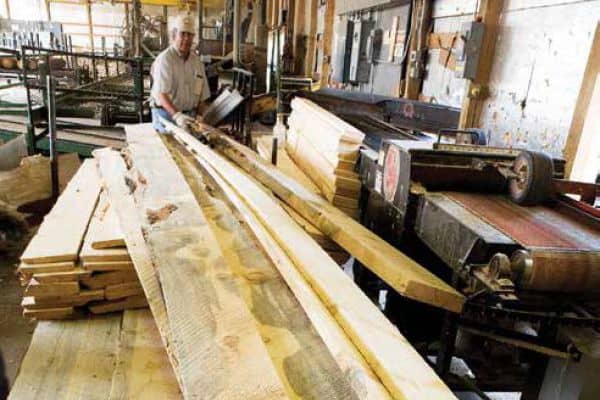
One of the interesting things about this blog is that we get to compare conditions that aren’t usually compared across our areas, Idaho, Montana, Oregon, Washington, California, the SW, Wyoming and South Dakota and Colorado. We could probably use more contributors from the Midwest, East and South.
This interesting piece is from the Aspen Business Journal, of Aspen, Colorado. (I was thinking the same information might be written differently if it were written, in say, Boulder…;))
Here’s the link and below are excerpts.
While Colorado’s forests continue to suffer from beetle epidemics at high altitude and the hangover from a century’s fire suppression at lower altitude, there’s some good news out there for those who believe in active forest management.
Timber prices, which were bottomed out during much of Colorado beetle kill epidemic, are set to skyrocket, and the state’s timber industry may be rising in time to take advantage, industry experts said. And while there are millions of acres of standing dead timber that may never be harvested, there’s also some good news out there for at salvaging at least some of the beetle-kill pine, as well.
“In general, we’re still suffering the impacts of a century of fire suppression, so at this point active management makes a lot of sense,” said Mike Eckhoff, a PhD Candidate in forest science at Colorado State University.
“We’ve lost 80 percent of our (timber) productivity since the 1980s,” Eckhoff said. “This could be a boon for Colorado’s timber industry provided that timber is actually made available for the industry to use.”
Timber prices hit an eight-year high in March, largely due to the rising U.S. housing market. Research by the International Wood Markets indicates the U.S. and Canada probably will not be able to fulfill that timber demand in two to three years, creating even higher prices and perhaps prompting imports from Europe.
Canadian timber production was hurt by the pine beetle epidemic, the report said, but also by permanent mill closings during the recession and the loss of two large mills due to fire.
The past failure of the Colorado timber industry is usually blamed on the U.S. Forest Service making fewer trees available in light of environmental resistance to logging. While the beetle-kill epidemic and catastrophic wildfires may have taken some of the edge off the latter concern, forest industry experts are now more worried that cuts to the Forest Service’s budget may hinder making wood available through forest management.
and
In addition, things have also been looking up for Colorado’s two large pellet mills, and rising timber prices will also help them, Fishering said.
“Our industry is pretty diverse, and we’re a lot more competitive than we were in the ’70s,” she said. “We are extremely optimistic.”
Colorado may also be able to salvage much more of the standing dead lodgepole pine, than previously thought, Eckoff said. While most industry experts thought that after three or four years the beetle-kill trees were not sturdy enough to create dimension timber, he said, new studies indicate that doesn’t appear to be the case for trees that have not fallen.
The upland spruce trees that are now being killed by the spruce bark beetle are highly prized in the industry, though not all the acreage will be available to loggers. In fact, about two-thirds of the state’s 4.5 million acres of spruce-fir forests are off limits to management because of wilderness or roadless designation, according to a study by the Colorado State Forest Service.
Still, Eckhoff thought there are plenty of acres in need of management that could be producing forest products.
“Colorado produces an annual net forest growth of 1.5 billion board feet, but we only harvest 6 percent of that, or 87 million board feet,” he said. “In other words the removals do not significantly reduce the interest nor do they touch the principal.”
I really hope that photo doesn’t represent Colorado’s mill capacity…
Good news for Coloradans who want to clear the 2500 miles of roads and 750 miles of powerlines that are soon to be barricaded by bug tree deadfall. It’s a good thing. I heard a tidbit…unconfirmed…that the mill in MOntrose will be cutting a lot of 2×4’s for a Colorado subdivision that will actually “feature” blue stained “made in Colorado” studs. Actually use it for an advertizing pitch. The same mill was saying that “blue stain” is a 30% “deduct” from the price they get.Since the stain does nothing to impair structural qualities…I’d think it would be a “no-brainer” for a contractor to snap this stuff up. I would also think that so much “blue-stain” from Canada is on the market…that the blue stain would lose it’s deduct.
Also want to point out that the stumpage these guys are paying the USFS is about $15/MBF, while Montana is paying up to $100/MBF. For Lodgepole and spruce. (I saw a Montana DNRC sale go for $250 MBF the other day!)
Both the mills in Colordo (well actually, the one is in Saratoga WYoming)will be logging MPB killed lodgepole. It makes you wonder what the “usefull life” on the dead lodgepole is. We’ve heard 5 years, we’ve seen 10 years…before they’re too rotten to salvage. I’m guessin both these mills figure they’re good for 5 more years…and then no more wood left. I sense with the low stumpage they know they’ll be makin a killin in that five years. Most of the spruce in Wyoming died years ago in a spruce beetle epidemic. The Montrose mill will take a lot of dead spruce also…I wonder what the “shelf life of a dead spruce is. Both mills were bought out of bankruptcy.
Anyway…now I’m just listening to myself talk.